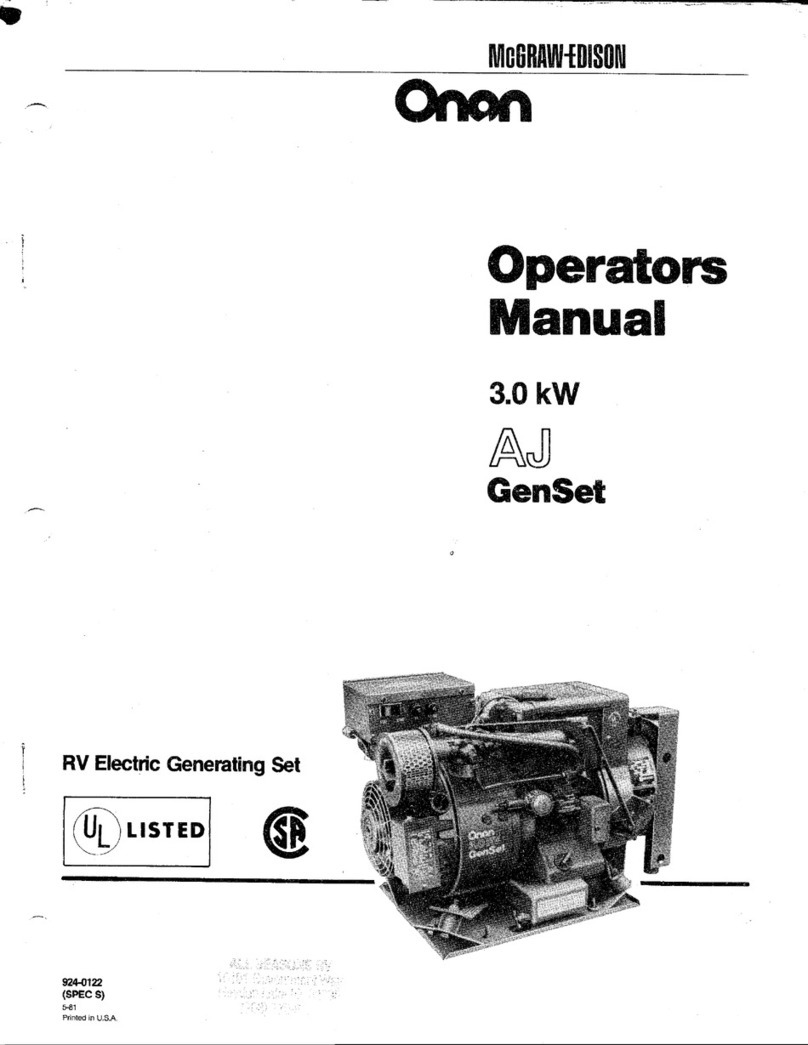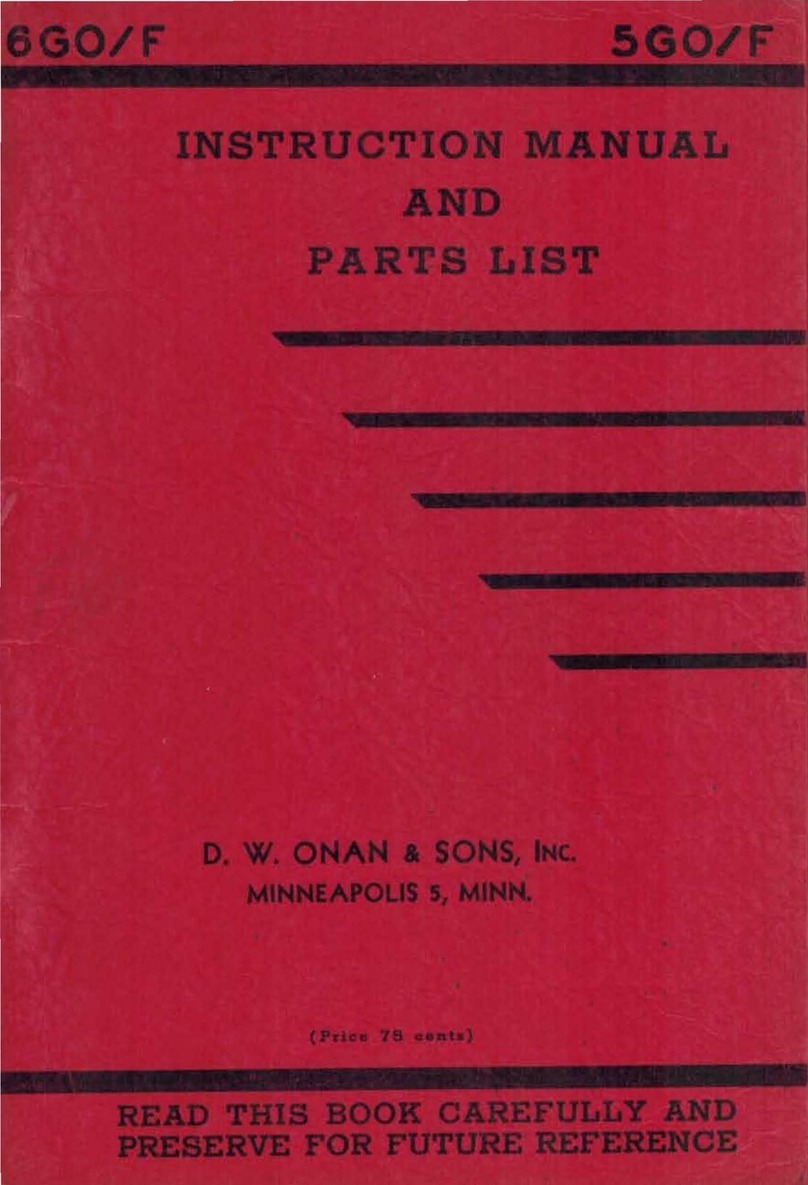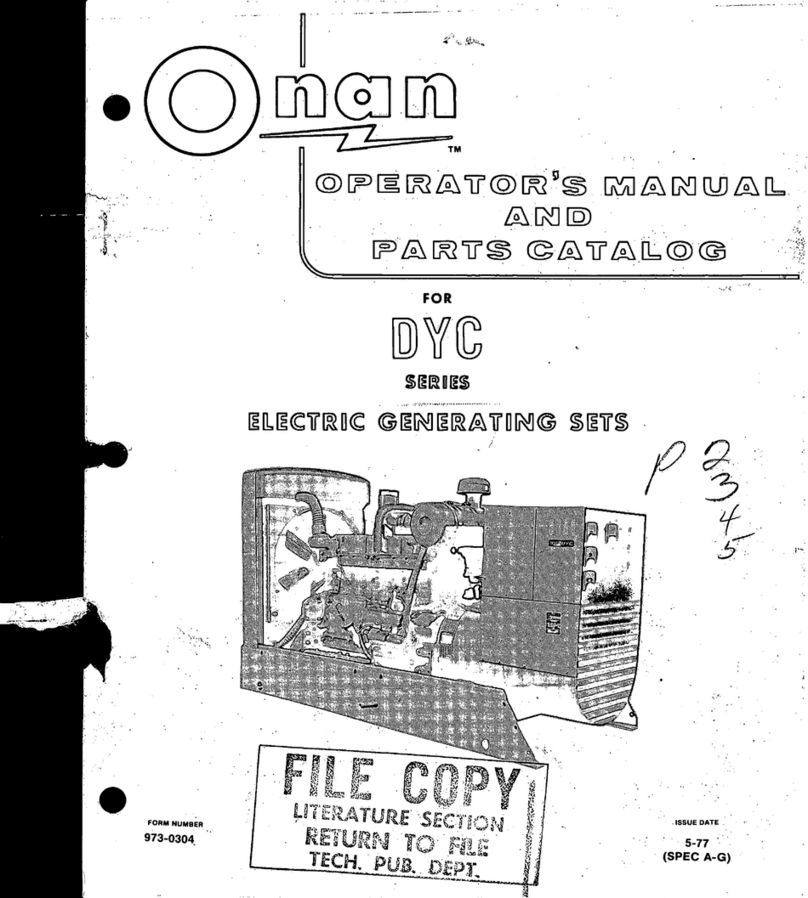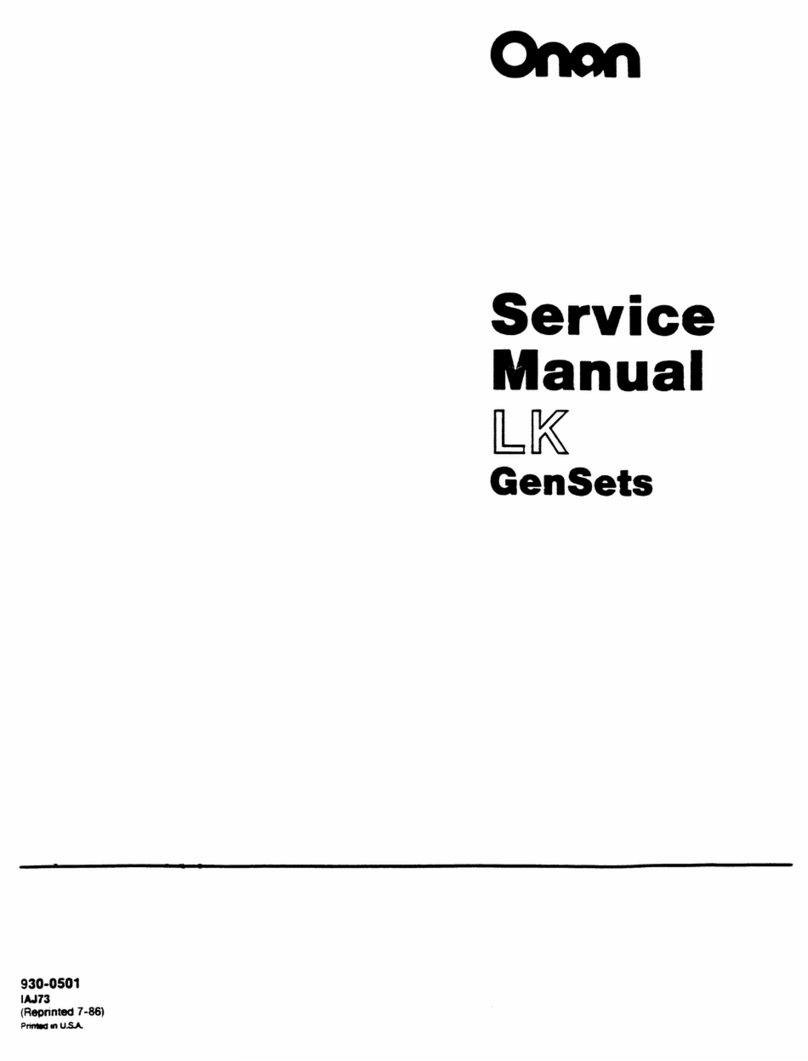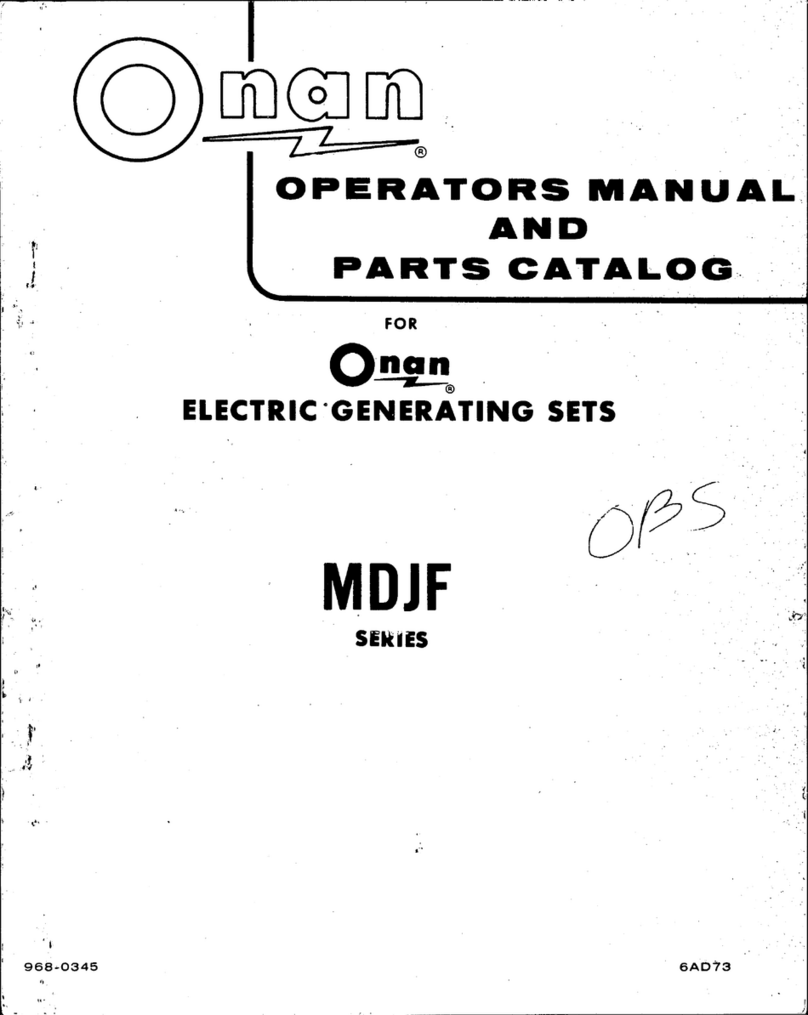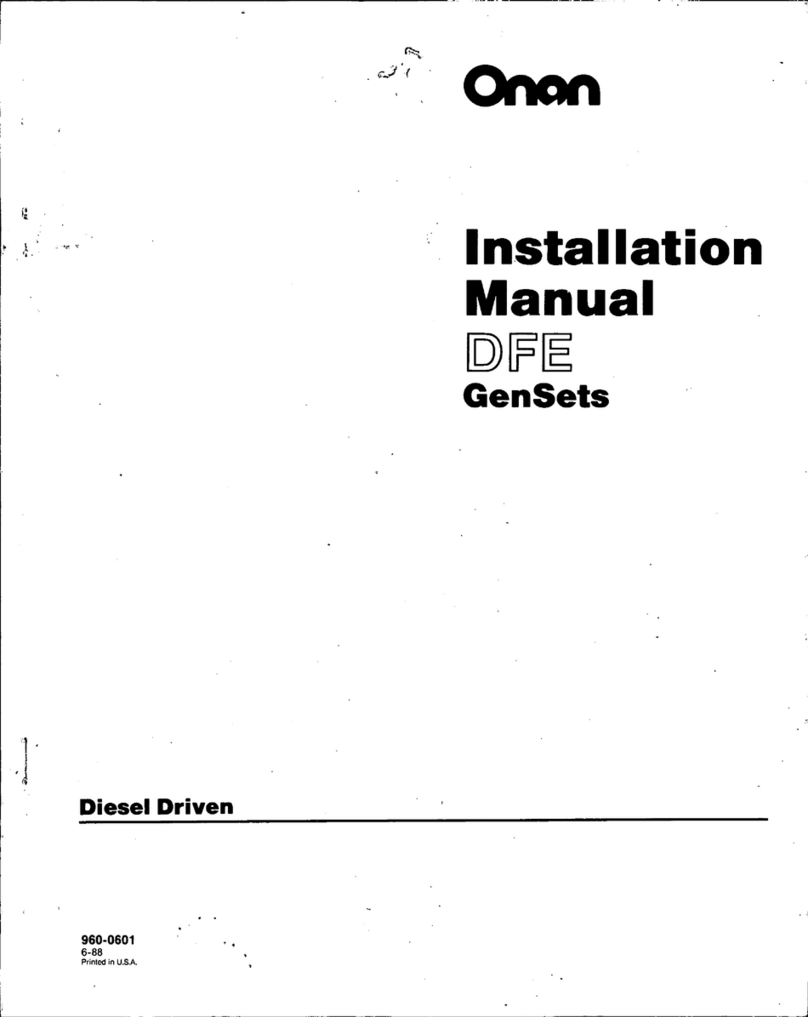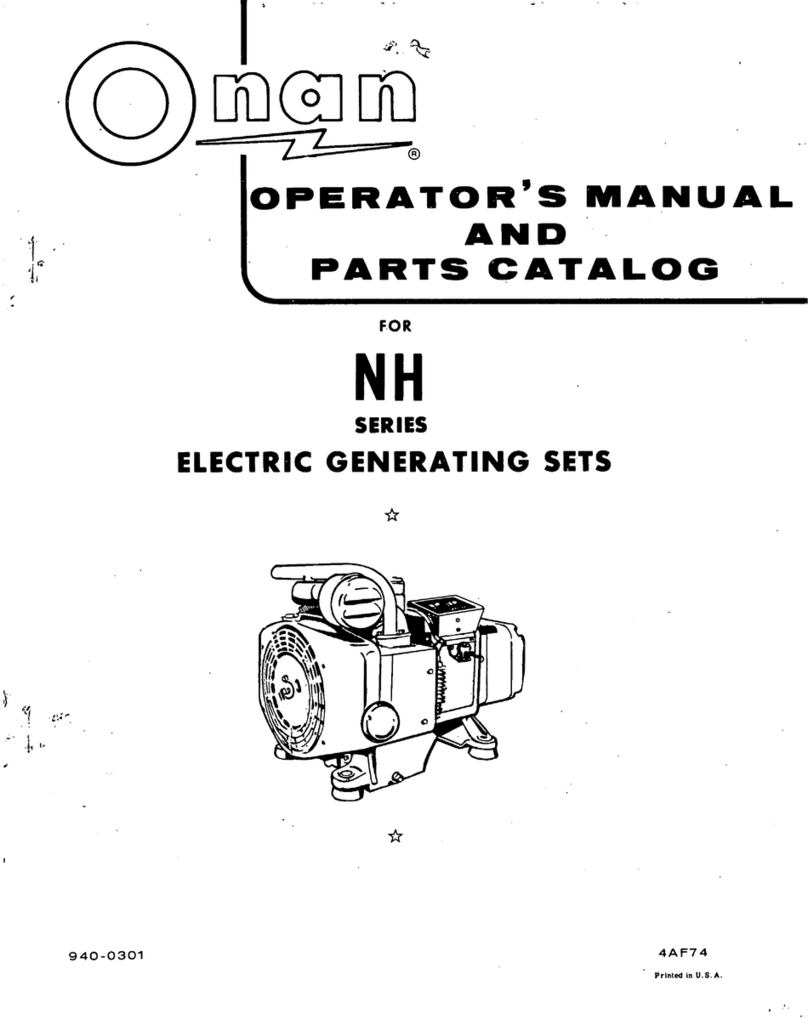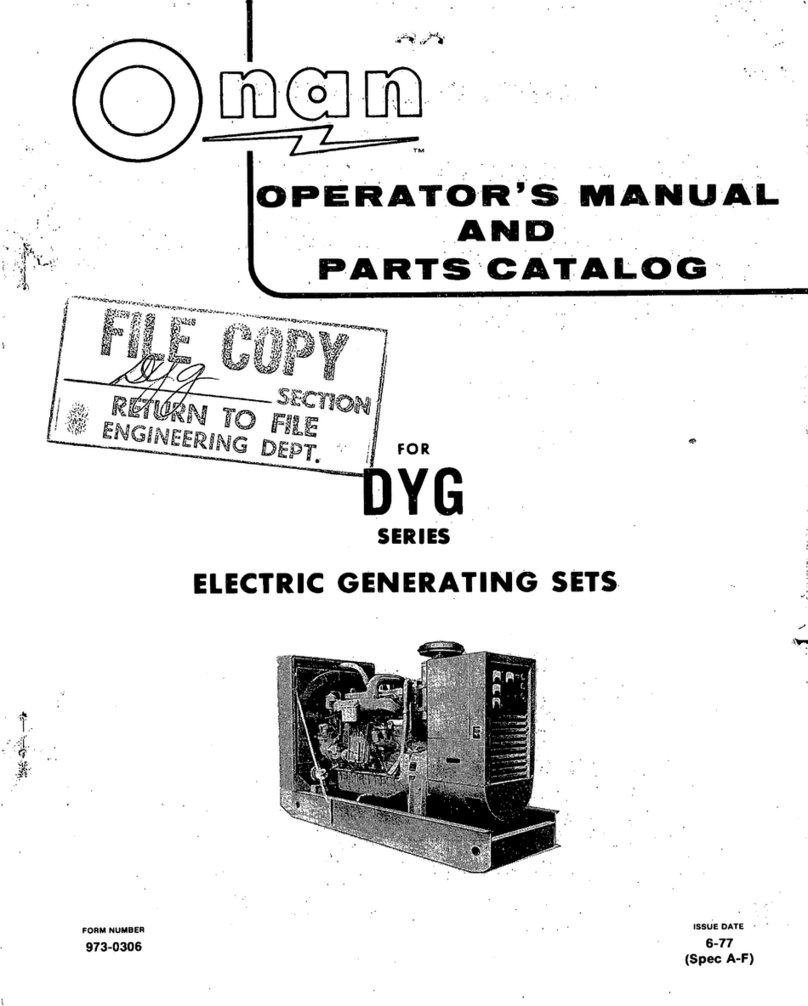
Safety Precautions
Thoroughly read the OPERATOR'S MANUAL before
operating the genset. Safe operation and top perfor-
mance can be obtained only with proper operation
and maintenance.
The following symbols
in
this Manual alert you to poten-
tial hazards to the operator, service person and equip-
ment.
M•M~®#!;I
Alerts you to an immediate hazard
which will result in severe personal injury
or
death.
IAWARNINGI Alerts you to a hazard
or
unsafe
practice which can resultin severepersonalinjury
or
death.
lA
CAUTION I Alerts you
to
a hazard
or
unsafe
practice which can resultin personalinjury
or
equip-
ment damage.
Electricity, fuel, exhaust, moving parts and batteries
present hazardswhich can result
in
severe personal inju-
ry
or death. GENERAL PRECAUTIONS
• Keep ABC fire extinguishers handy.
• Make sure all fasteners are secure and torqued
properly.
• Keepthe gensetand itscompartmentclean. Excess
oil and oily rags can catch fire. Dirt and gearstowed
in
the compartment can restrict cooling
air.
• Before working on the genset, disconnectthe nega-
tive
(-)
battery cable at the battery to prevent start-
ing.
• Use caution when making adjustments while the
genset
is
running-hot,
moving or electrically live
parts can cause severe personal injury or death.
• Used engine oil has been identified by some state
and federal agencies as causing cancer or
reproductive toxicity. Do not ingest, inhale, or
contact used oil or its vapors.
• Benzene and lead
in
some gasolines have been
identified by some state and federal agencies as
causing cancer or reproductive toxicity.
Do
not to
ingest, inhale or contact gasoline or its vapors.
• Do not work
on
the genset when mentally or physi-
cally fatigued or after consuming alcohol or drugs.
• Carefully follow all applicable local, state and
federal codes.
GENERATOR VOLTAGE IS DEADLY!
• Generator output connections must
be
made by a
qualified electrician
in
accordance with applicable
codes.
• The genset must not be connected to the public util-
ity or any other source of electrical power. Connec-
tion could lead to electrocution of utility workers,
damageto equipment and fire.
An
approved switch-
ing device must
be
used to prevent interconnec-
tions.
• Use caution when working
on
live electrical equip-
ment. Remove jewelry, make sure clothing and
shoes are dry and stand
on
a dry wooden platform
on
the ground or floor.
FUEL IS FLAMMABLE AND EXPLOSIVE
• Keep flames, cigarettes, sparks, pilot lights, electri-
cal arc-producing equipment and switches and all
other sources of ignition well away from areas
where fuel fumes are present and areas sharing
ventilation.
• Fuel lines must
be
secured, free of leaks and sepa-
rated or shielded from electrical wiring.
• Use approved non-conductive flexible fuel hose for
fuel connections at the genset.
ENGINE EXHAUST IS DEADLY!
• Learn the symptoms of carbon monoxide poisoning
in
this Manual.
• Never sleep
in
the vehicle while the genset
is
run-
·~
ning unless the vehicle has a working carbon mon-
oxide detector.
• The exhaust system must
be
installed
in
accor-
dance with the genset Installation Manual.
•
Do
not use engine cooling air to heat the vehicle in-
terior.
• Make sure there
is
ample fresh air when operating
the genset
in
a confined area.
MOVING PARTS CAN CAUSE SEVERE PERSONAL
INJURY OR DEATH
•
Do
not wear loose clothing or jewelry near moving
parts such as PTO shafts, fans, belts and pulleys.
• Keep hands away from moving parts.
• Keep guards
in
place over fans, belts, pulleys, etc.
BATTERY GAS IS EXPLOSIVE
• WEAR SAFETY GLASSES and
DO
NOT SMOKE
while servicing batteries.
• When disconnecting or reconnecting battery
cables, always disconnect the negative
(-)
battery
cable first and reconnect it last to reduce arcing.
MBL-1

